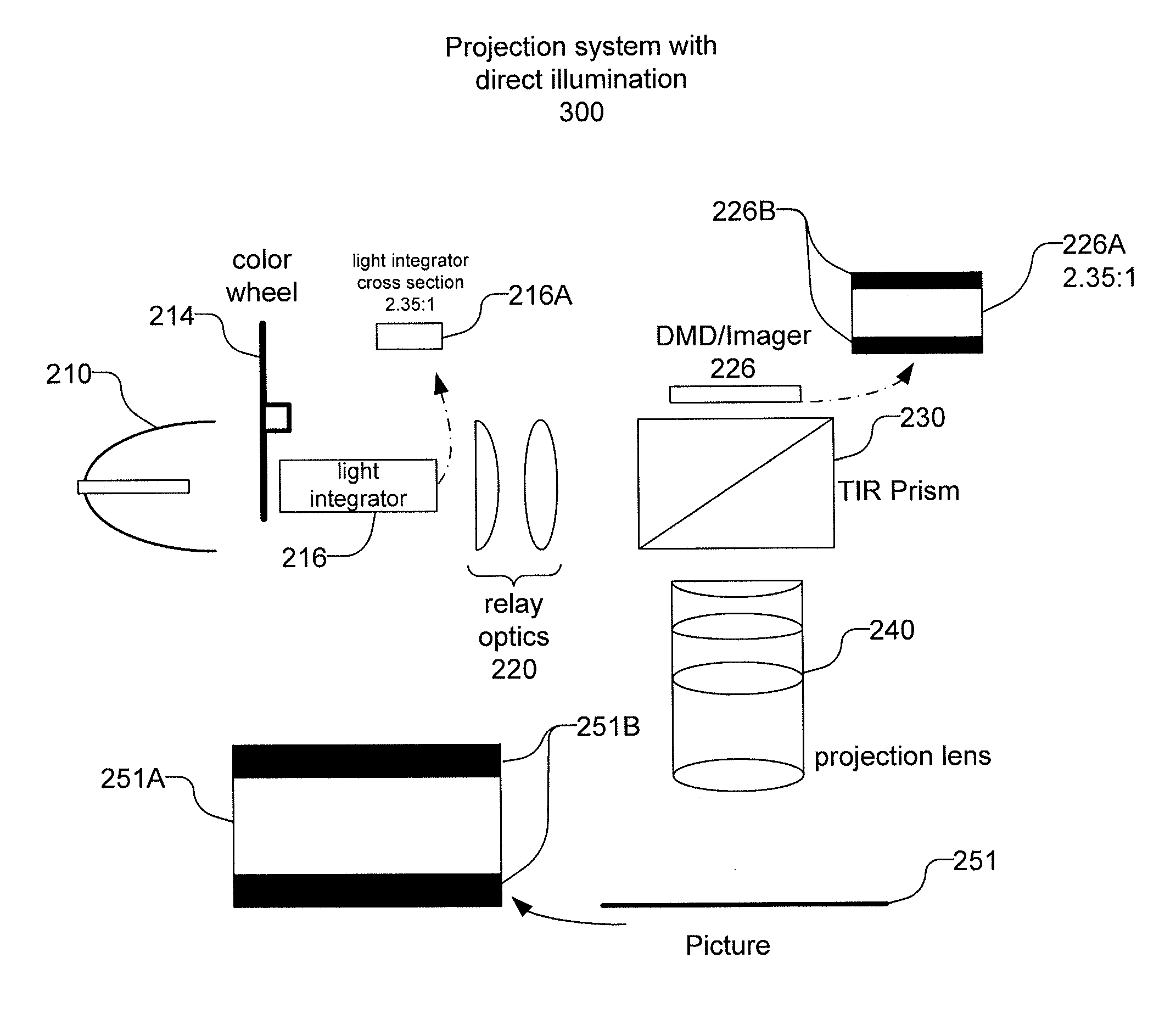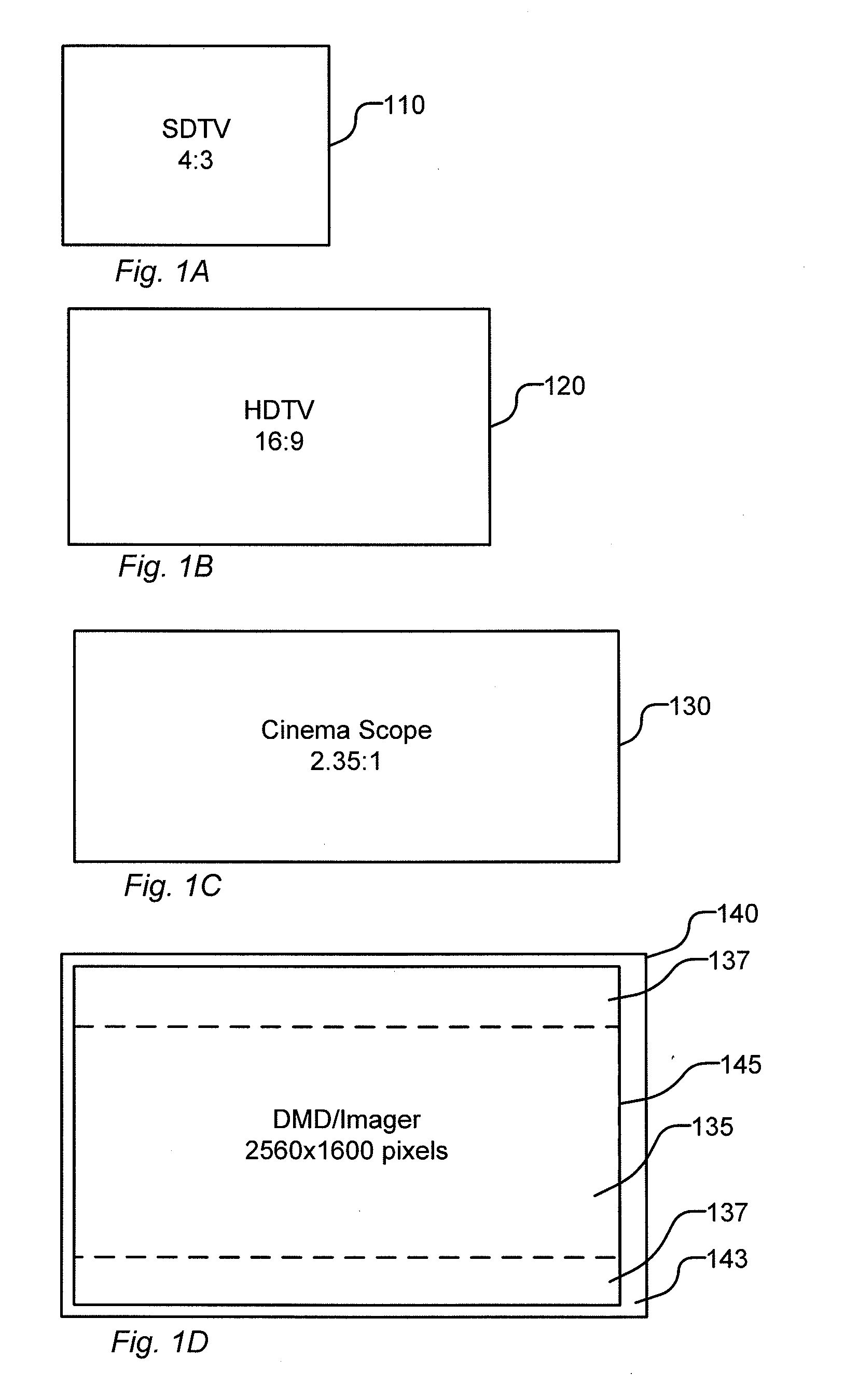Direct Illumination for Projection
- Summary
- Abstract
- Description
- Claims
- Application Information
AI Technical Summary
Benefits of technology
Problems solved by technology
Method used
Image
Examples
Embodiment Construction
[0022]Embodiments of the present invention are directed towards projection optics, projection systems, and image and video projectors. Specifically, embodiments of the present invention are directed at improving the contrast ratio between the dark bands that frame or border a projected image or video that result from using and imager device with an active area that has an aspect ratio different from the aspect ratio of a desired projected image or video. To reduce or eliminate light scattered or leaked from non-active areas of an imager device, embodiments of the present invention are directed toward illuminating only the active area of the imager device that has the same aspect ratio as the desired projected image or video. According to various environments of the present invention, limiting which area of an imager device, such as a DMD, LCD or LCOS imager chips, can be achieved by shaping the aspect ratio of uniform illumination by using a light integrator with an output having th...
PUM
 Login to view more
Login to view more Abstract
Description
Claims
Application Information
 Login to view more
Login to view more - R&D Engineer
- R&D Manager
- IP Professional
- Industry Leading Data Capabilities
- Powerful AI technology
- Patent DNA Extraction
Browse by: Latest US Patents, China's latest patents, Technical Efficacy Thesaurus, Application Domain, Technology Topic.
© 2024 PatSnap. All rights reserved.Legal|Privacy policy|Modern Slavery Act Transparency Statement|Sitemap



